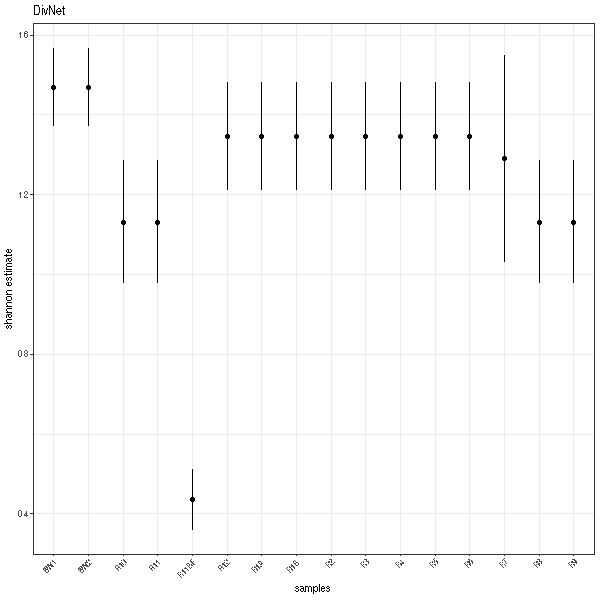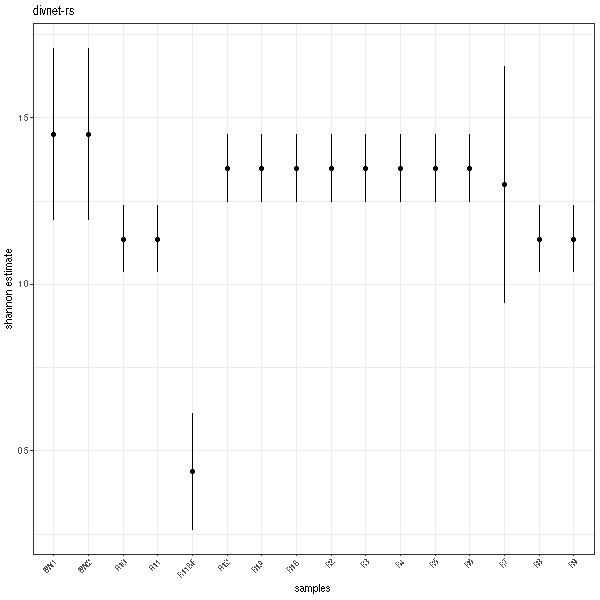Full Tutorial
You can find the scripts and data for this walk-through on the GitHub page.
There, you can see how to analyze the Lee dataset included with the DivNet R package with divnet-rs, including getting data out of R into the format that divnet-rs wants, running divnet-rs, and then importing data back in to how and how to use it.
Comparing DivNet and divnet-rs
I will use the Lee data grouped by phylum as in the DivNet docs.
Run DivNet and generate divnet-rs input files
First you should check out 1_lee_phylum.R. It is an R script for running DivNet on the Lee data aggregated by phylum. It also generates the data that will be used fir divnet-rs.
Run divnet-rs
Now you can run divnet-rs using the 2_lee_phylum_config.toml config file. Something like this:
divnet-rs ./test_files/lee_data_walkthrough/2_lee_phylum_config.toml
You will notice that it is faster, but I just want to make it clear that on a dataset as small as this one I would use the the R version of DivNet. Generally, you would only be using divnet-rs if whatever you want to do is impossible in the R version!
Import divnet-rs output back into R
To see how to import the data back in to R so you can work with it, check out 3_import_divnet_rs_data.R.
Wrap up
To try it out, assuming you haven't rearranged anything in the divnet-rs source directory, you can run the commands like this:
Rscript ./docs/lee_data/1_lee_phylum.R
OPENBLAS_NUM_THREADS=1 divnet-rs ./docs/lee_data/2_lee_phylum_config.toml
Rscript ./docs/lee_data/3_import_divnet_rs_data.R
Note the OPENBLAS_NUM_THREADS=1 part in front of the divnet-rs command. In my tests, forcing OpenBLAS to use a single thread results in much better divnet-rs performance. See this section of the divnet-rs manual for more information about this.
Plots
And here are the plots!
One thing that you will notice is that the error bars are a bit different. This is because the MC-MH algorithm DivNet uses (and thus that divnet-rs uses) is dependent on random number generation. So you'll get some noise run-to-run.
Another thing you may notice is that a lot of the samples have the exact same estimate for Shannon index. This is expected. Rather than giving you estimates of diversity based on each sample, the DivNet method uses the biological replicates and covariate info to try and estimate the diversity of thea ecosystem/treatment/grouping/etc that you are interested in. Thus, within each group specified by your model/covariates, you will get the same alpha estimates and taxa estimated relative abundance. For more info, see DivNet's getting started vignette.
DivNet

divnet-rs
